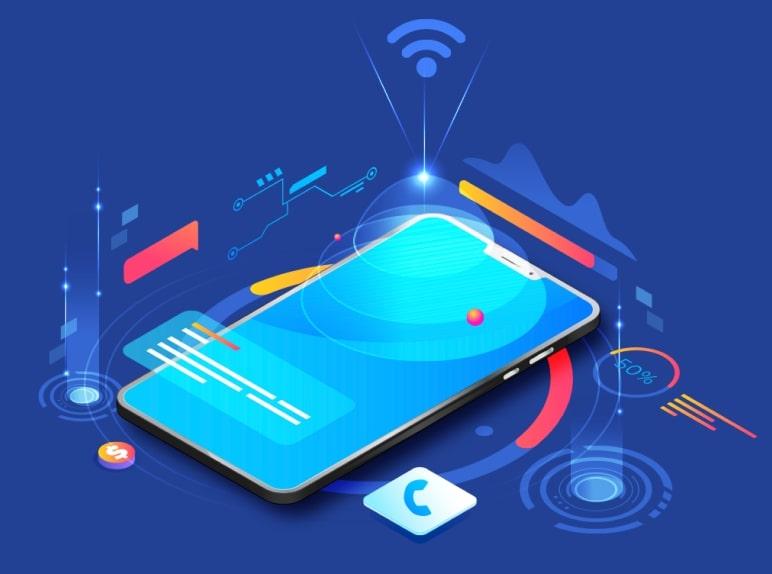In today's digital age, mobile apps have become an essential part of every business. They provide a direct channel for businesses to communicate with their customers, offer personalized experiences, and increase brand awareness. However, developing a mobile app can be a daunting task, especially for businesses without the necessary technical expertise.
This is where outsourcing mobile app development comes in. Outsourcing app development to a third-party vendor can help businesses save time, reduce costs, and get access to a skilled team of developers, designers, and testers. However, outsourcing mobile app development requires careful planning and execution to ensure a successful outcome. In this article, we will discuss the steps involved in outsourcing mobile app development in 2023.
-
Define your app development needs
Before outsourcing mobile app development, it is crucial to define your app development needs. This includes identifying the purpose of your app, the target audience, the features and functionalities you want to include, and the platforms you want to support.
By defining your app development needs, you can communicate your requirements clearly to the outsourcing vendor and ensure that they understand your vision for the app. This also helps the vendor to provide a more accurate estimate of the cost and timeline for app development.
-
Research outsourcing vendors
Once you have defined your app development needs, the next step is to research outsourcing vendors. Look for vendors that have experience in developing mobile apps in your industry and are familiar with the platforms and technologies you want to use. Consider factors such as the vendor's reputation, their portfolio of past projects, and their pricing model.
You can also consider outsourcing vendors from different regions to get access to a wider pool of talent and potentially reduce costs. However, be aware of cultural and language differences that may impact communication and collaboration.
-
Evaluate vendor capabilities
After researching outsourcing vendors, evaluate their capabilities to ensure that they have the necessary expertise and resources to deliver your app development needs. This includes reviewing their technical skills, design capabilities, and project management processes.
You can evaluate vendor capabilities by asking for their portfolio of past projects, asking for references from past clients, and conducting interviews with their team members. This helps you to get a better understanding of the vendor's approach to app development and their ability to meet your needs.
-
Define project scope and timeline
Once you have selected an outsourcing vendor, it is important to define the project scope and timeline. This includes outlining the specific deliverables, milestones, and deadlines for the project.
By defining the project scope and timeline, you can ensure that both you and the vendor have a clear understanding of the project requirements and can manage expectations throughout the development process. This also helps to ensure that the project is completed on time and within budget.
-
Establish communication channels
Effective communication is crucial when outsourcing mobile app development. Establish clear communication channels with the outsourcing vendor, including the frequency and method of communication. This includes regular status updates, progress reports, and feedback sessions.
You can also establish a project management tool to facilitate communication and collaboration, such as Trello, Asana, or Basecamp. This helps to ensure that everyone involved in the project has access to the same information and can stay on top of the project progress.
-
Monitor project progress
Throughout the app development process, it is important to monitor project progress to ensure that the project is on track and meets your expectations. This includes tracking project milestones, reviewing deliverables, and providing feedback to the outsourcing vendor.
You can monitor project progress by establishing regular check-ins with the outsourcing vendor, reviewing project status reports, and conducting quality assurance testing. This helps to ensure that the project is completed according to the defined scope, timeline, and budget.
-
Conduct User Acceptance Testing
Once the app development is complete, it is important to conduct user acceptance testing to ensure that the app meets your
users' needs and expectations. This involves testing the app for functionality, usability, and performance.
You can conduct user acceptance testing by involving a group of users to test the app and provide feedback. This helps to identify any issues or bugs that need to be addressed before the app is launched.
-
Launch and post-launch support
Once the app has passed user acceptance testing, it is ready to be launched. The outsourcing vendor can assist with launching the app on the app stores and providing post-launch support.
Post-launch support includes providing ongoing maintenance and updates to the app, addressing any issues that arise, and ensuring that the app continues to meet your business needs and users' expectations.
-
Evaluate project outcomes
After the app is launched and post-launch support is complete, it is important to evaluate the project outcomes. This includes reviewing the app's performance, user engagement, and return on investment.
By evaluating project outcomes, you can determine whether outsourcing mobile app development was a successful strategy for your business and identify areas for improvement in future app development projects.
Conclusion
Outsourcing mobile app development services can be a cost-effective and efficient way for businesses to develop customized mobile apps that meet their specific needs. However, outsourcing app development requires careful planning, communication, and execution to ensure a successful outcome.
By defining your app development needs, researching outsourcing vendors, evaluating vendor capabilities, defining project scope and timeline, establishing communication channels, monitoring project progress, conducting user acceptance testing, launching the app, providing post-launch support, and evaluating project outcomes, you can ensure a successful outsourcing experience and develop a mobile app that meets your business needs and users' expectations.
